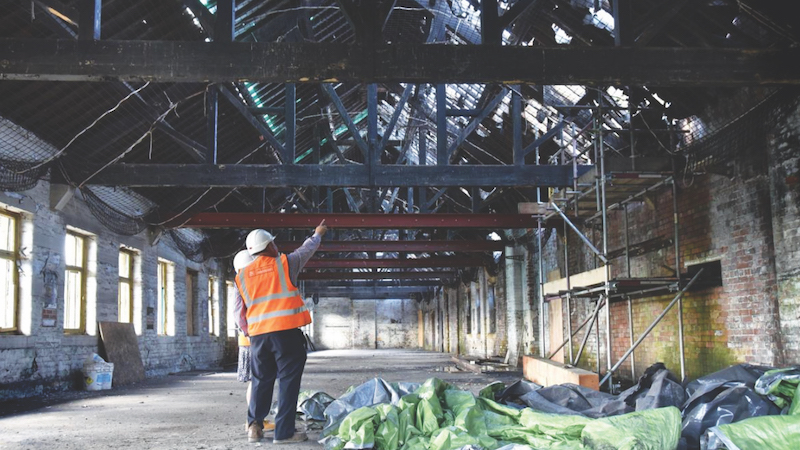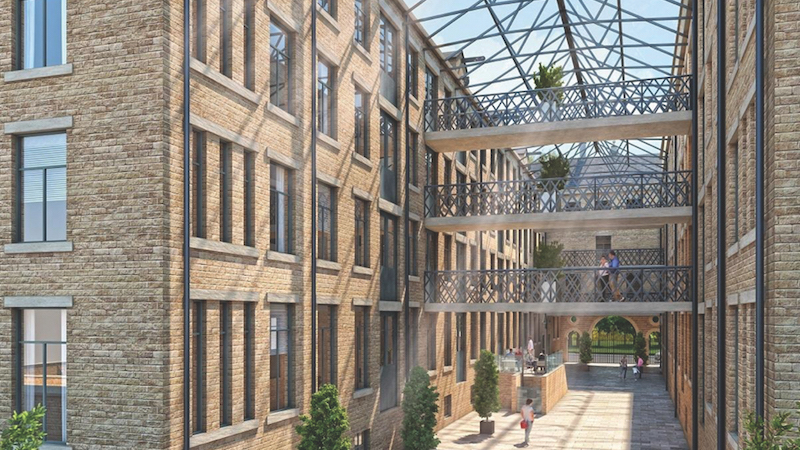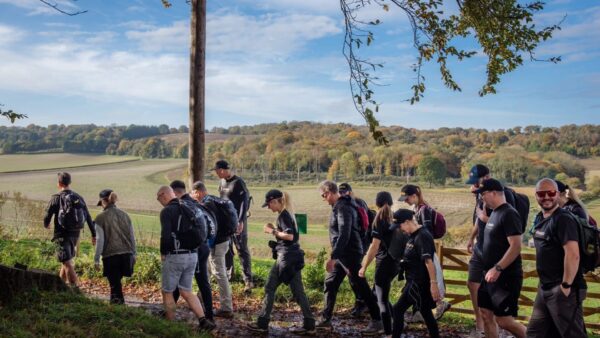Rob Pell shares his experience of the challenging transformation of a Grade-II listed Bradford wool mill into residential space

The Conditioning House project in Bradford involved the conversion of a Grade-II listed former wool processing mill into 135 studios, one, two, three and four-bed apartments, office space and a proposed gym.
The 1902 building was constructed in a ‘U’ shape, with two larger mills for wool testing areas and the smaller for offices, laboratory and canteen areas.
The building had suffered from vandalism, theft of lead and slate, and fire. Several roof areas had been open to the weather over 20 years. The only reasonably safe areas were the stone and concrete stairs. It was possible to access some floors but this required mapping out floor by floor, using support systems from below.
From early 2017 to November 2018, slow but steady access was made in clearing out known asbestos, and clearing out stairs, corridors and some floors, which allowed further surveys.

From mid-2018 up to spring 2019 we carried out several areas of structural propping, which allowed surveys and testing. The propping went from the existing basement right up to the third floor and roof trusses.
Remedial and repair/replacement works were carried out with the structural engineers and our design team. Roof trusses that had deteriorated were part replaced with new jointed oak and steel parallel flange channels (PFC) bolted to existing and repaired trusses.
Existing timber floors were repaired using Douglas fir timber beams, either full beams at 6,500 x 400 x 200 and/or steel universal columns (UC) in lieu of timber beams. Timber floor beams were replaced one at a time with the process taking six months for all floors in each building. As floor beams were repaired, new floor infills were carried out, either repair and replacement or complete new engineered flooring.
The main roof to Mill 1 was re-covered using 80% recalled slates and 20% salvaged slates to the inner roof slopes, while Mill 2 roof was rebuilt – creating duplex third-floor apartments – and the whole roof kept in line with the original roof height. The link roof was re-covered using 100% salvaged and recycled slates.

The glass atrium was re-covered using a shatterproof polycarbonate roofing system that ‘in theory would allow someone to stand on the roof’ – we have not put this to the test and have instead designed a safer access and working methodology process.
We had a number of restrictions on the external work due to its listed status, but keeping the lifting wheels is the only condition applicable to the inside. We are looking to make a feature of them – they will be visible from the atrium and some apartments.
Lessons learned
The biggest thing I have learned from the project was not to underestimate the challenges. I have been involved with this scheme since late 2016 and in 2021 we will finally complete. It’s been four and a half years of work and, at times, not enough time.
The biggest thing the company has learned is that, as a company and as a team, we have all risen to the challenge and have completed an amazing scheme. From everyone in our company the process of my ‘can do’ attitude is now a company ‘can do’.
Rob Pell is head of construction at Priestley Homes.











